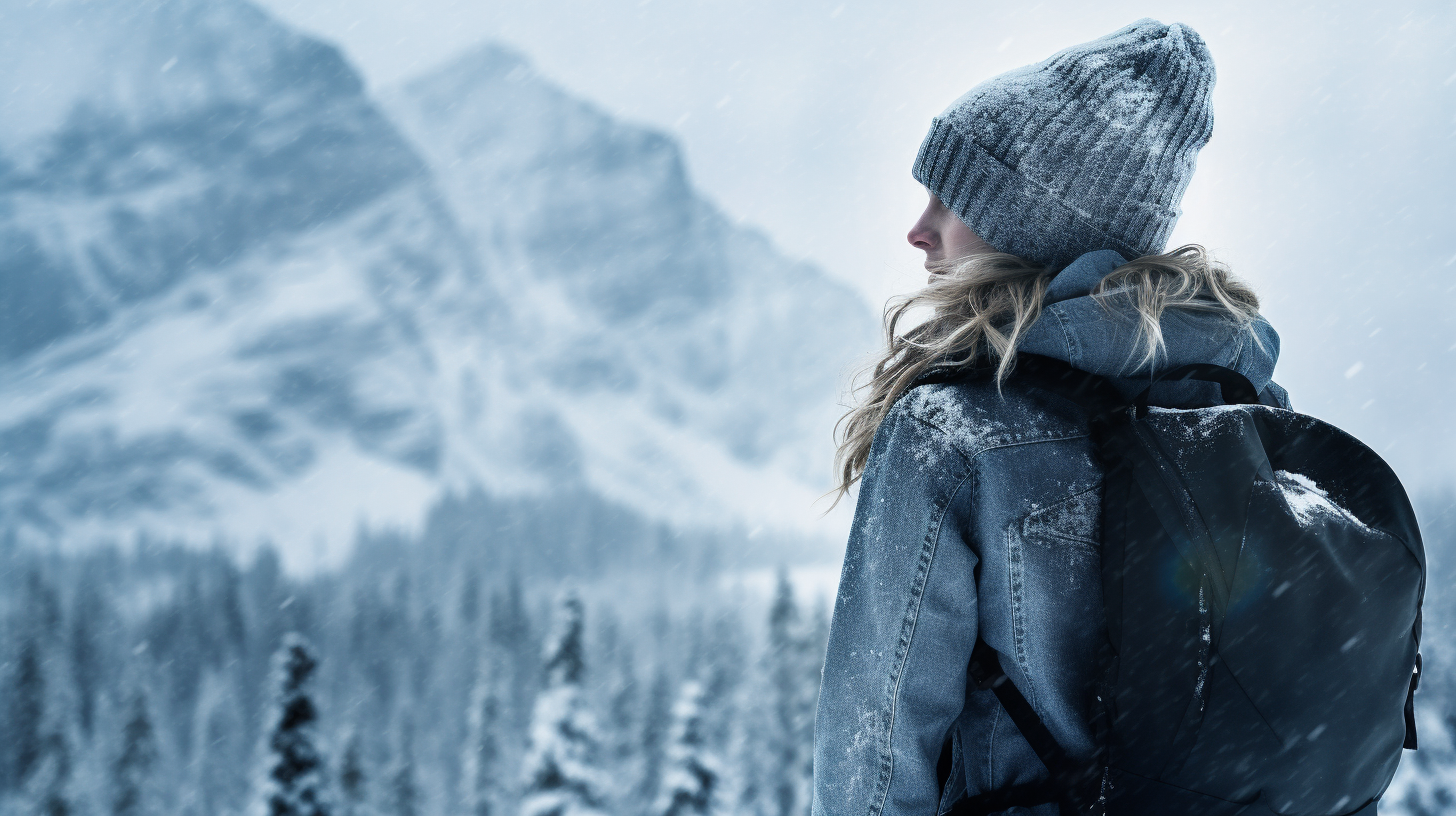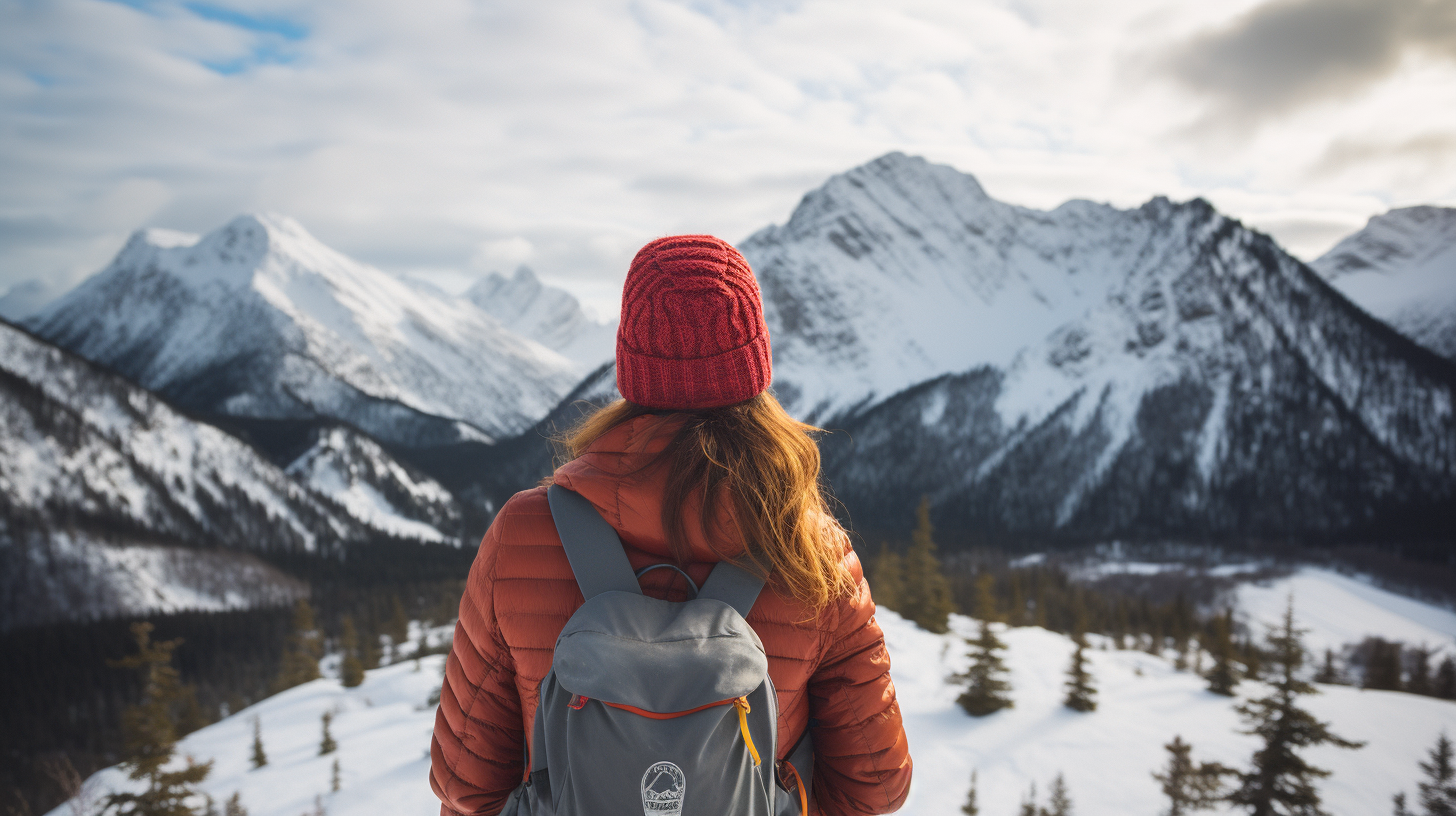Camping Breakfast Ideas for Easy Mornings
Fuel your mornings with these easy and delicious camping breakfast ideas for every type of camper, from no-cook to campfire favourites.
Winter hiking is an adventure that goes beyond a typical hike. It presents an entirely unique and mesmerizing experience, distinct from its summer counterpart. For beginners, the idea of trekking through snowy trails and frosty landscapes can be both intriguing and intimidating. But with the right guidance, this chilly adventure becomes an exhilarating journey.
In this article, we’ll discuss:
Embarking on a winter hike demands more than just enthusiasm; it requires the right gear. Your gear can make the difference between a memorable adventure and a challenging ordeal. It’s not just about comfort; it’s about safety.
Clothing: Layering is key. Start with a moisture-wicking base layer, add an insulating middle layer, and top it off with a waterproof and windproof outer layer. This combination will keep you warm, dry, and protected against the elements.
Footwear: Your feet are your primary mode of transport. Opt for waterproof, insulated hiking boots with a firm grip. Remember, keeping your feet warm and dry is essential in snowy conditions.
Accessories: Don’t overlook the small but vital items. A warm hat, gloves, and thermal socks are indispensable. Also, consider sturdy trekking poles for balance, and UV-protective sunglasses.
Backpack: Lastly, a sturdy backpack is essential to carry your gear, extra clothing, and emergency supplies. Opt for a comfortable, ergonomic design that can handle the weight without straining your back.
Each item in your winter hiking kit plays a pivotal role in your safety and enjoyment. Invest in quality gear; it’s an investment in your safety and overall experience.

Just like any great adventure, a bit of preparation goes a long way in making sure you have a blast. By understanding these basics, beginners can set the foundation for a safe and enjoyable hike.
Start simple. Look for well-marked, popular trails that are known to be beginner-friendly. Use apps or local hiking websites to find trails that match your fitness level and hiking experience.
Winter weather can be tricky. Keep an eye on the forecast and understand what the temperatures and conditions will be like. It’s all about being prepared, not surprised!
If you’re new to hiking or winter sports, consider some pre-hike fitness. Simple activities like walking or jogging can boost your stamina. Remember, hiking in snow is more challenging than your usual walk in the park.
Always let a friend or family member know your hiking plan. Share details like where you’re going and when you expect to be back. Safety first!
Besides your hiking gear, make sure to pack the ten essentials. These essentials are the basics you need to survive if anything goes wrong. Always be prepared.
Safety on winter trails hinges on preparedness and respect for nature’s unpredictability. Unlike summer hiking, winter trails can hide potential dangers like ice patches or weak snow cover over streams. The first step is always to stay on marked trails. These are typically checked and maintained by park authorities and are less likely to have unexpected hazards.
Carrying and knowing how to use a basic navigation tool, like a map and compass or a GPS device, is another key safety measure. Mobile phones can lose battery quickly in cold weather, so relying solely on them isn’t advisable.
It’s also important to understand and recognize signs of changing weather. Winter conditions can shift rapidly, turning a clear day into a challenging scenario. Being aware of your surroundings and knowing when to turn back is essential. This cautious approach is especially important for beginners who may not yet have the experience to handle sudden snowstorms or blizzards.
Staying warm and energized is crucial for enjoying and enduring a winter hike. The key is to manage your body heat and energy levels smartly. Start by eating a hearty, high-energy meal before setting out. Foods high in fats and proteins are ideal as they provide long-lasting energy. Also, pack energy-rich snacks like nuts, chocolate, or energy bars.
Hydration is equally important. Although you might not feel as thirsty in cold weather, your body still loses water through breathing and sweat. Carry an insulated water bottle to keep your drinks from freezing.
Understanding the signs of hypothermia and frostbite is vital. Hypothermia can occur when your body loses heat faster than it can produce it, leading to dangerously low body temperature. On the other hand, Frostbite affects extremities like fingers and toes, causing a loss of feeling and color. If you notice any of these signs, seek shelter and warmth immediately.
Winter hiking offers a unique opportunity to witness nature’s quiet beauty. The snow-covered landscapes, the serene silence broken only by the crunch of your boots, and the crisp winter air create a magical atmosphere. For beginners, it’s important to take moments to appreciate these aspects.
Capture the Moments: Bring along a camera or use your phone. Winter hikes offer some spectacular photo ops – from frosty leaves to icy waterfalls. And hey, if you snap a cool pic, it’s a great excuse to stop for a breather!
Spotting Wildlife: Winter is a great time to spot animals you might not see at other times of the year. Keep an eye out for tracks in the snow – they can lead you to some interesting wildlife encounters (from a safe distance, of course).
Mindfulness and Mental Health: There’s something incredibly peaceful about a quiet hike through a winter landscape. Use this time to clear your mind, breathe in the crisp air, and just be present in the moment. It’s not just good for your body, but for your soul too.
Respect the Environment: Respecting the environment is also essential. Stick to trails to avoid damaging the fragile winter ecosystem and be mindful of wildlife. The tranquility of winter forests is a haven for many animals, and it’s important to minimize disturbance.
Remember, winter hiking isn’t just about reaching the end of the trail; it’s about enjoying the journey. So, put on those layers, pack your hot cocoa, and get ready to make some chilly, but awesome, memories!

And there you have it – your beginner’s guide to winter hiking! We’ve covered everything from the essential gear to keep you cozy, to safety tips that ensure you hike smart, and even ways to soak in every bit of the winter wonderland.
To quickly recap, we explored:
Now that you’re equipped with these tips, why not plan your own winter hike? Picture yourself stepping into a snowy trail, armed with knowledge and excitement. It’s more than just a hike; it’s an experience that invigorates both body and mind.
Subscribe to our newsletter to get the outdoors delivered right to your inbox.